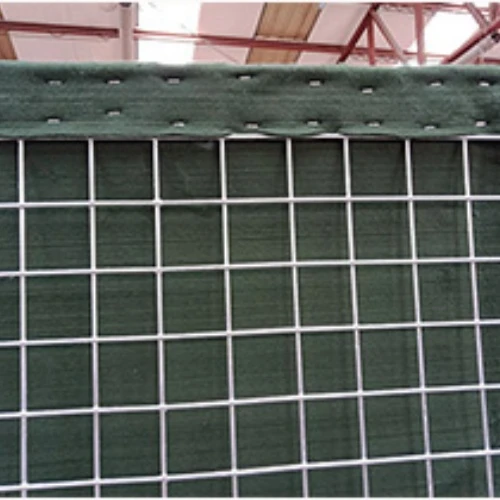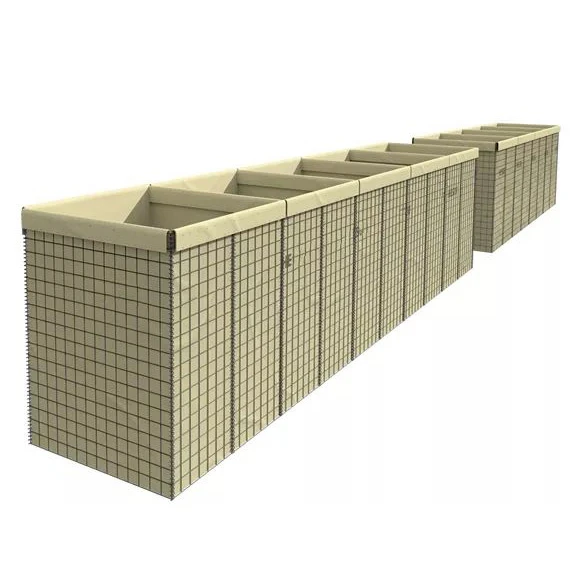Military defensive barriers are structures designed to provide protection and enhance security in military environments, typically during combat situations or in areas where security needs are heightened.These barriers can be made from a variety of materials, such as concrete, steel, wire mesh, sandbags, or barbed wire, and are used to protect military personnel, equipment, and assets from external threats. The primary purpose of these barriers is to create physical obstacles that slow down or deter enemy forces from advancing. They can also offer a defensive advantage by providing cover for soldiers and creating strategic chokepoints that are harder for the enemy to breach. Military defensive barriers are commonly used in the construction of military camps, borders, checkpoints, and forward operating bases. They also serve to secure key installations, such as weapon depots and command centers, making them a vital part of military defense strategies. Additionally, some barriers are designed to protect against specific threats, such as blast-resistant barriers that shield against explosives or fortified fences that protect against vehicle incursions. In essence, military defensive barriers are essential for safeguarding troops, equipment, and strategic locations, and are a fundamental element of military defense tactics.
What Are the Benefits of Using Military Defensive Barriers?
The use of military defensive barriers provides several significant benefits in enhancing security and protection during military operations. One of the primary advantages is their ability to create a physical barrier that delays or prevents enemy advances, thereby increasing the time available for military personnel to respond. These barriers can deter direct attacks or slow the movement of enemy forces, especially when combined with surveillance systems and other security measures. Another key benefit is that military defensive barriers offer protection from various threats, including small arms fire, shrapnel, and explosives. Barriers made from reinforced materials, such as steel or concrete, are designed to absorb and deflect impacts, providing safety to soldiers and preventing equipment damage. In addition, military defensive barriers help to secure sensitive areas and critical infrastructure, such as weapon storage sites or command posts, ensuring that these assets remain protected from sabotage or unauthorized access. Furthermore, these barriers contribute to the psychological security of personnel, as they create a sense of safety and reduce the risk of surprise attacks. Overall, military defensive barriers are essential for maintaining operational security, providing physical protection, and improving overall defense strategy in combat or high-risk situations.
How Do Military Defensive Barriers Compare to Other Security Barriers?
Military defensive barriers differ from other types of security barriers in terms of their construction, materials, and intended purpose. While general security barriers, such as fences or gates, are often used to control access and provide basic protection in residential, commercial, or public spaces, military defensive barriers are built to withstand more extreme threats and conditions. For example, military barriers are often constructed using stronger materials, such as steel, reinforced concrete, or high-tensile wire, and are designed to withstand explosions, gunfire, and other combat-related forces. In contrast, standard security fences or walls are typically made from lighter materials, such as wood or chain link, which are suitable for everyday security needs but may not provide adequate protection in high-risk environments. Military defensive barriers also serve more specialized functions, such as protecting military personnel, equipment, and sensitive installations, and they are designed to be quickly deployed or fortified in response to emerging threats. These barriers can include additional features like razor wire, sandbags, and blast walls to provide enhanced protection against specific types of attacks. While general security barriers focus on controlling access and deterring petty theft or vandalism, military defensive barriers are specifically designed to defend against hostile forces and are an integral part of military defense operations.









